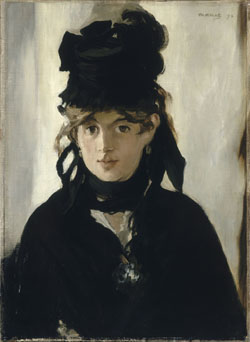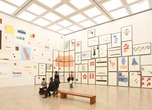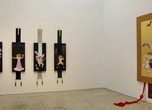
Photo by Takashi Homma
Posted: Tue May 11 2010
The Mitsubishi Ichigokan Museum, Tokyo opened its doors in Marunouchi, Tokyo on April 6. When it was originally built, the Mitsubishi Ichigokan was the first western-style office building in the area. Completed in 1894, the building was designed by British Architect Josiah Conder on an invitation from the Japanese government, still newly formed after Japan’s opening to the West. At the time it bustled with activity, containing, among other things, the banking division of the Mitsubishi Company. By 1968, however, it had become dilapidated and was demolished. After 40 years, the Mitsubishi Ichigokan has been reborn on the same site as a major new museum, rebuilt according to Conder’s original plans.
The building was designed in the Queen Anne style, which was popular in England in the latter half of the 19th century, and has a striking presence among the modern buildings lining the streets around it. As a museum located at the centre of the city, the new Mitsubishi Ichigokan is aiming to become a popular cultural focal point in the Marunouchi district, while also inheriting the 100-year history of its predecessor – and continuing it into the future. The museum plans to hold exhibitions focusing on 19th century modern art.
In keeping with this aim, the first exhibition being held to commemorate the museum’s opening is ‘Manet et le Paris moderne’ (Manet and Modern Paris), which is centred on an artist who was active during the 19th century, Édouard Manet (1832-1883).
Manet’s work had an incredible influence on the generations of artists who were to follow him, and he remains one of the most important figures in the history of modern art. The exhibition traces the connections between Manet’s work and the city of Paris, which was in the process of transforming into a modern city throughout his lifetime. Around 80 pieces by the artist are displayed, including oil paintings, sketches and prints. There are also around 80 oil paintings, architectural sketches, sculptures and photographs from his contemporaries, giving a true impression of the artistic culture that was present in the Paris Manet lived and worked in.
There are three particularly interesting points worth noting about this new museum. The first is the way the exhibition has been structured. Because the Mitsubishi Ichigokan Museum was originally designed as an office building, it doesn’t have many of the open spaces one would usually associate with a large-scale museum. In fact, the gallery space is made up of a series of small rooms. This meant that deciding which room to place each piece in posed a considerable challenge to the director, who said that organizing the works to suit a particular theme for each space was ‘like solving a puzzle’. The order art works are placed in, or the way they are arranged, changes the impression the viewer is given completely; even if you are looking at a work you have seen before, in this museum the way you experience it will be different.
The second aspect is the lighting. The museum uses a new optical fibre lighting system which has two light sources in order to both protect the art works from damage and provide the best conditions for appreciating the works. This means that the colours appear bright and clear, and the art is not exposed to ultraviolet rays. The greens, purples and blacks in Manet’s works are particularly beautiful to see. This new lighting means that delicate brushwork stands out in relief, making the works appear excitingly fresh, as if they have just been painted.
The last remarkable thing about this exhibition is, of course, the works that are being displayed in Japan for the first time ever: ‘Baudelaire’s Mistress, Reclining (Portrait of Jeanne Duval)’, ‘Portrait of Emile Zola’ and ‘Lola de Valence’. When the latter was exhibited in 1863, its bold, rough brushwork and strong colour contrasts attracted a storm of criticism and it was widely rejected. When we look at the work now, such criticism seems intrinsically linked with the age it was made in, and it’s possible to see how little it related to how well the work was completed.

‘Berthe Morisot au Chapeau Noir et Violettes’ 1872 Musée d'Orsay ©RMN (Musée d'Orsay) / Hervé Lewandowski / distributed by DNP artcom
There are very few opportunities to see such a substantial collection of Manet’s works in Japan, and the experience of seeing them in a building designed in the period in which he lived is an invaluable one. Manet is one of the founding figures of modern art – this chance to fully appreciate his lifetime and works is one not to be missed.
‘Manet et le Paris moderne’
Date: Until Sun Jul 25, closed on Mon and Mon Jul 19
Location: Mitsubishi Ichigokan Museum, Tokyo (Full details & map)
Admission: ¥1,500; ¥1,000 university and high school students; ¥500 junior high and primary school students; free children under primary school age
Tags:
Tweets
- About Us |
- Work for Time Out |
- Send us info |
- Advertising |
- Mobile edition |
- Terms & Conditions |
- Privacy policy |
- Contact Us
Copyright © 2014 Time Out Tokyo













Add your comment